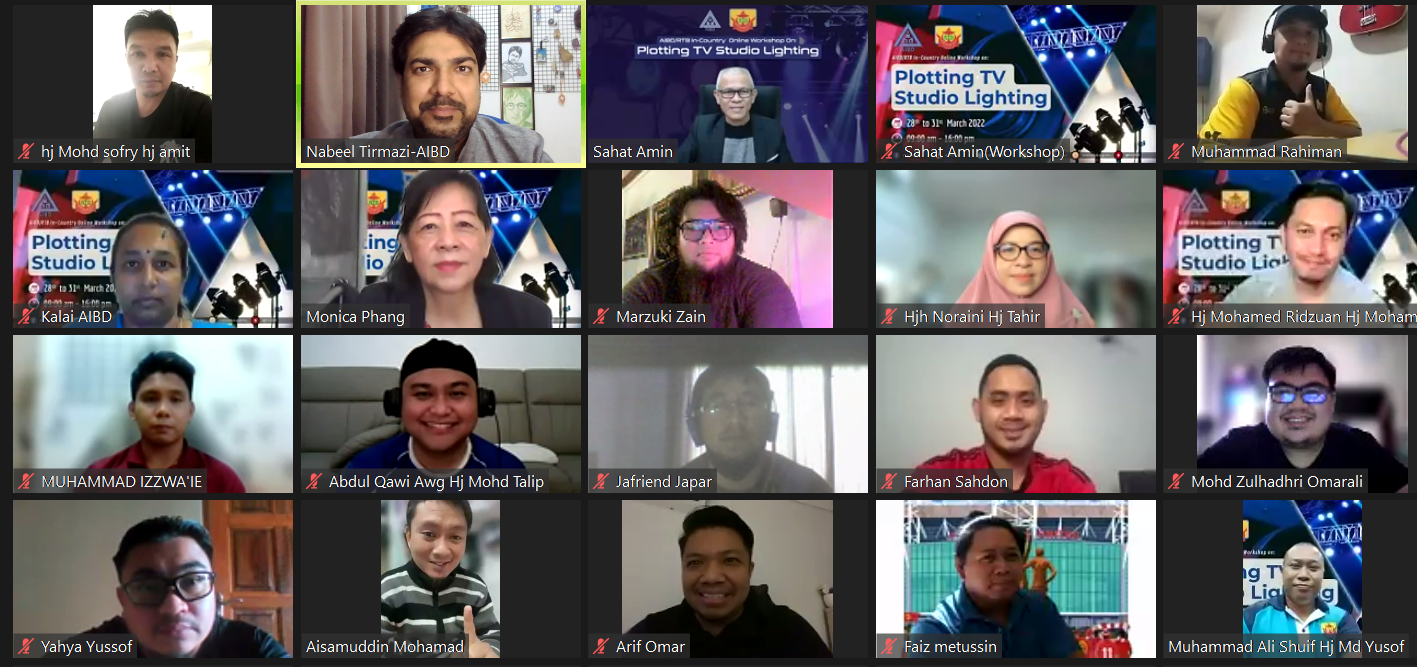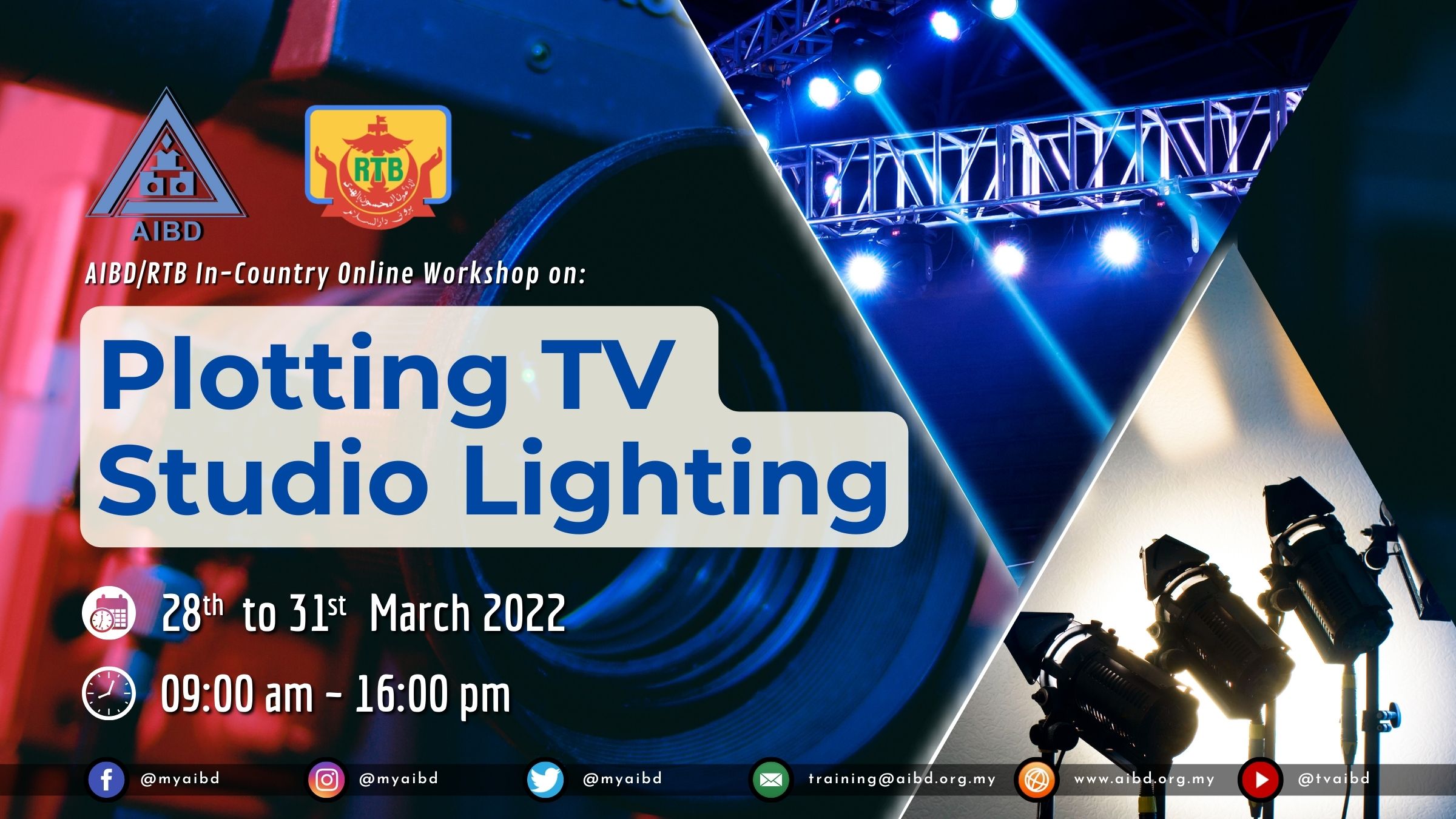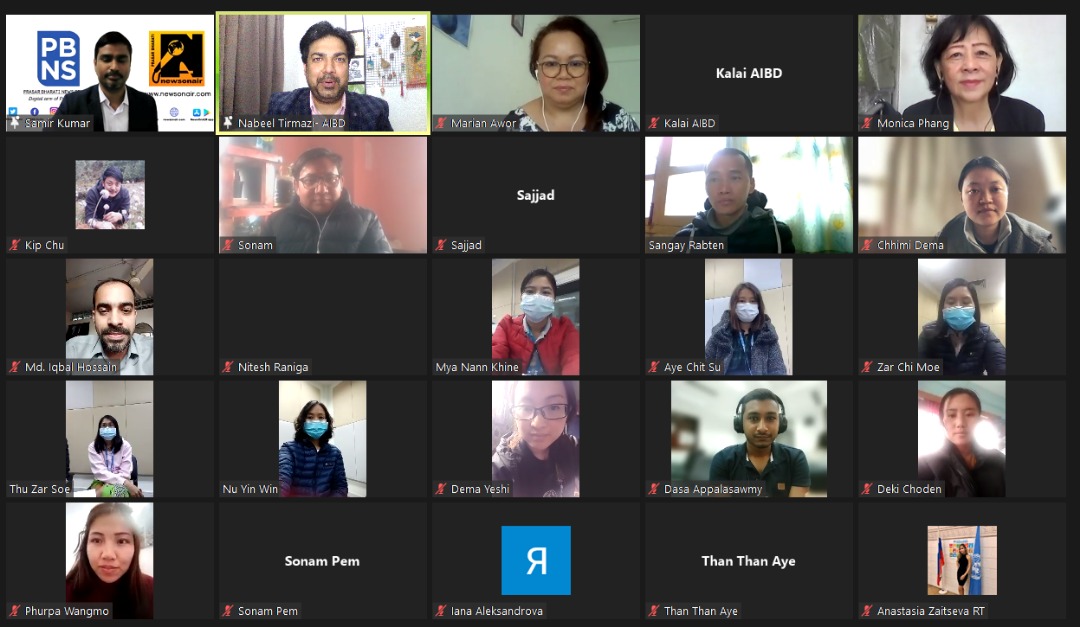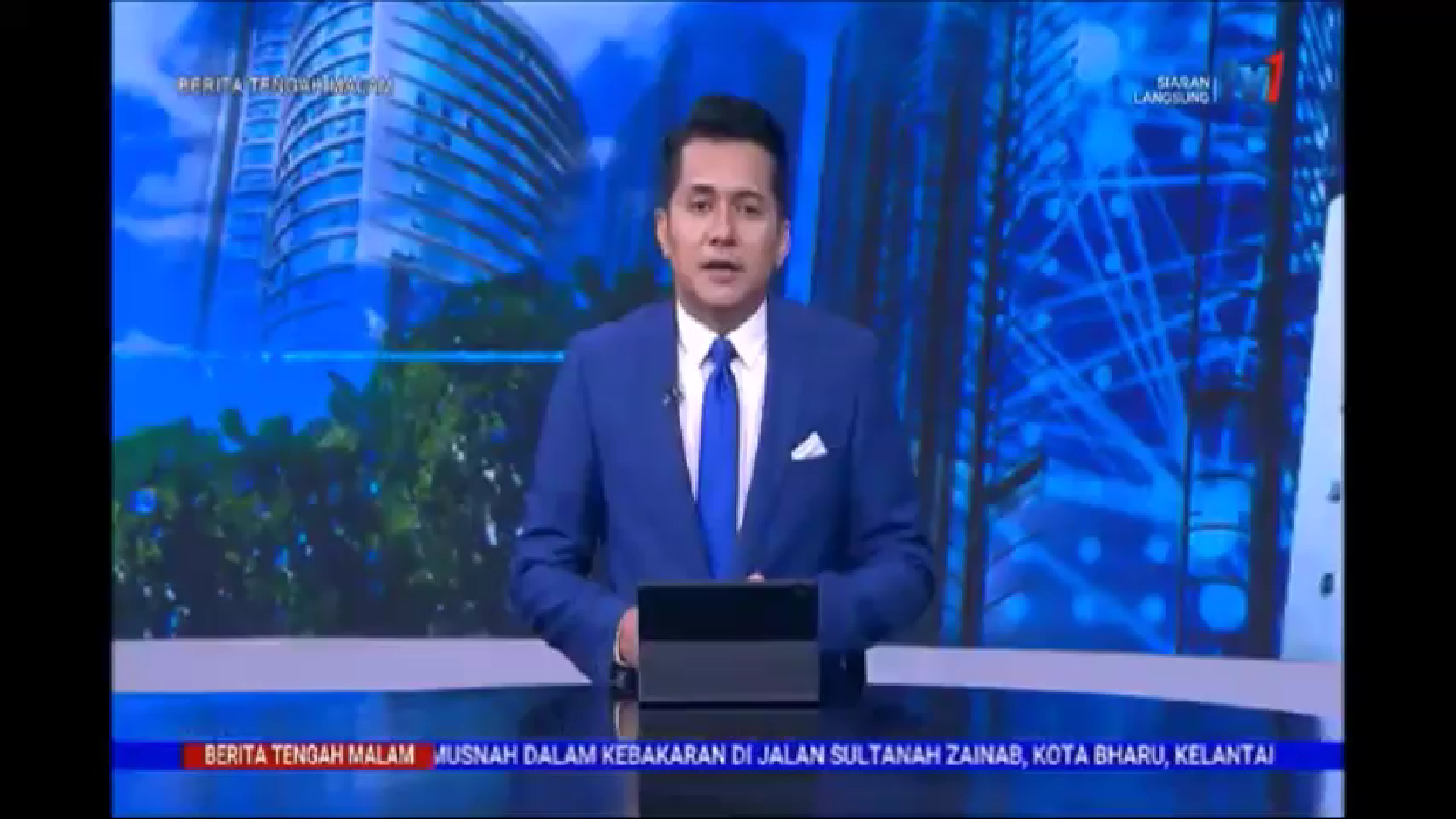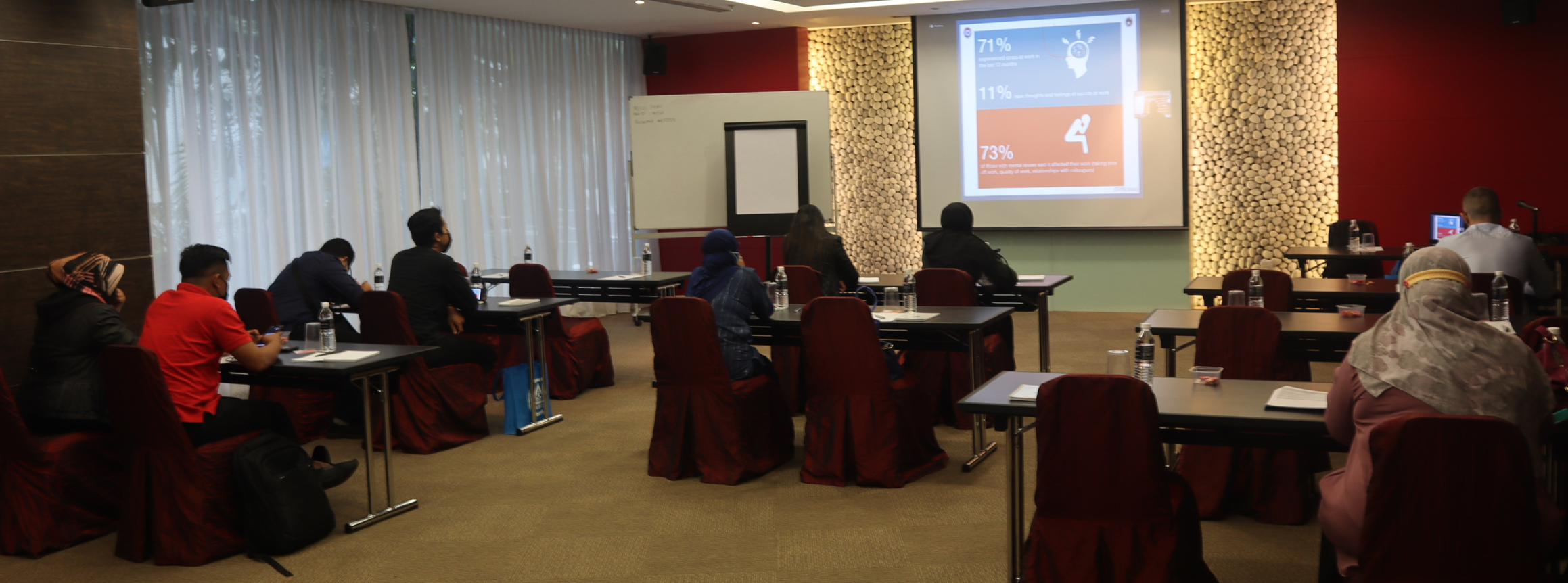Our very first speaker of the day on the topic: Representation of RefugeeIssues & Communities in Malaysian Media – Ms Elise Arya Chen Independent Human Rights Advocate, Malaysia.
Join us: https://www.facebook.com/MYAIBD/videos/690012655658695
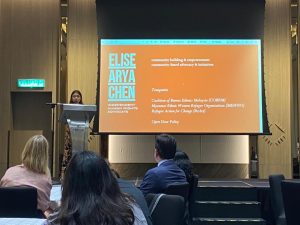
Speaker 1: AIBD/ Safe & Fair National Seminar
Our very first speaker of the day on the topic:
Remarks on AIBD/ Safe & Fair National Seminar
AIBD/ILO National Seminar on Inclusive & Gender-Sensitive Reporting on Issues
Knowledge & skills on Plotting Studio Lighting enhances TV production standards
Knowledge and skills on plotting TV studio lighting could produce
AIBD/RTB In-Country Online Workshop on Plotting TV Studio Lighting, 28-31 March 2022
Introduction Lighting Plotting is part of the pre-production process involves
Content & Technology must be “married” for online content creation
Newsroom Operation is the nerve or core centre of all
“Major equipment of lighting designers is their eyes, everything else is subsidiary”, said Lighting Consultant
Lighting technicians are responsible for the movement and set up
AIBD/IPDC In- country workshop on Safety for Journalists: Risks, Threats & Opportunities
Background Across the world, journalists are increasingly faced with threats, defamation,
AIBD/UNESCO-IPDC In-Country Seminar on Investigative Journalism: Going Beyond the Headlines
AIBD/UNESCO-IPDC In-Country Seminar on Investigative Journalism: Going Beyond the Headlines
Day 2:AIBD/UNESCO In-country Workshop on Safety for Journalists
Day two of AIBD/UNESCO IPDC In-country workshops on safety for
AIBD /UNESCO IPDC In-Country Workshop on Safety for Journalists: Survival Training
Participants from Malaysian media joined AIBD/UNESCO In-country workshop on Safety




